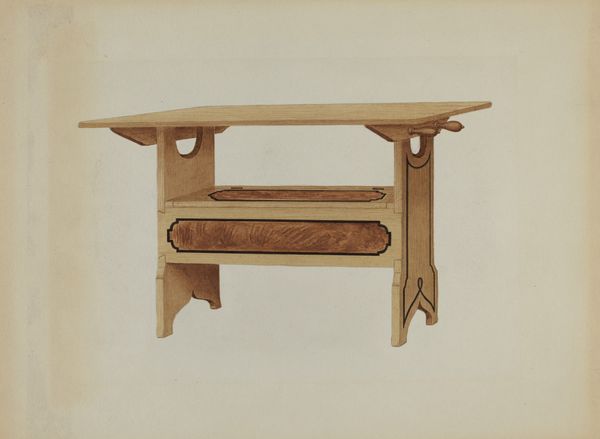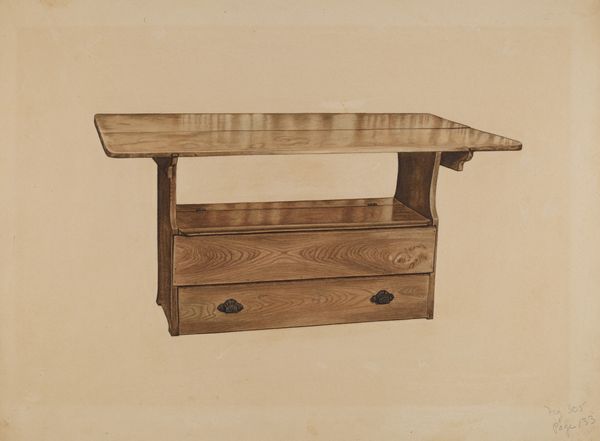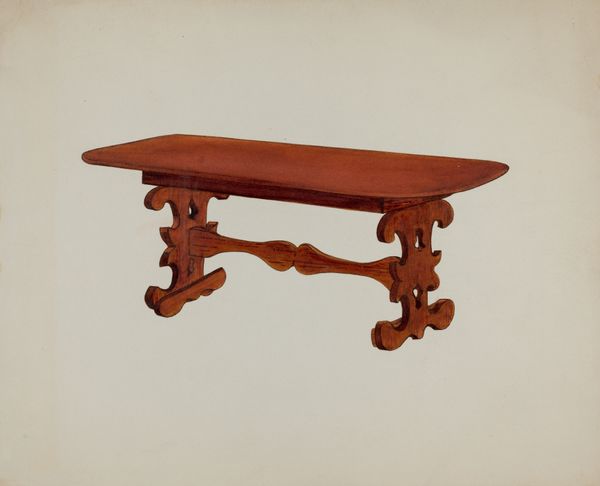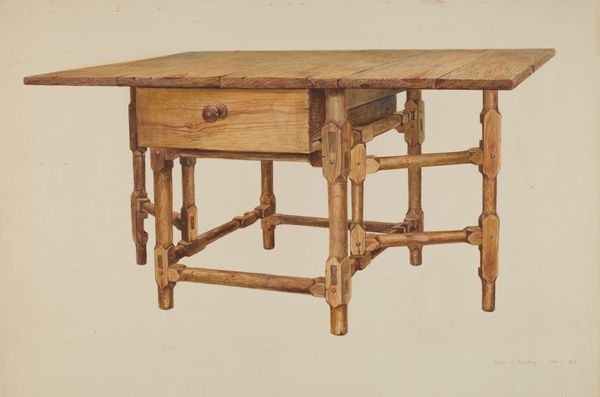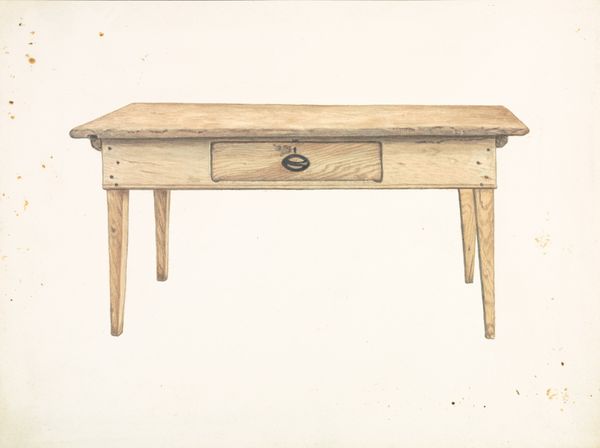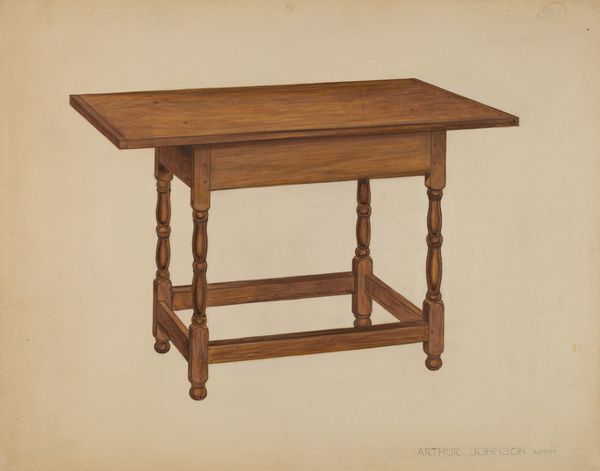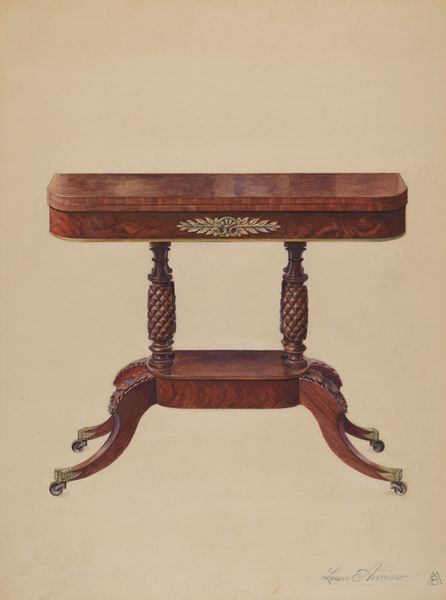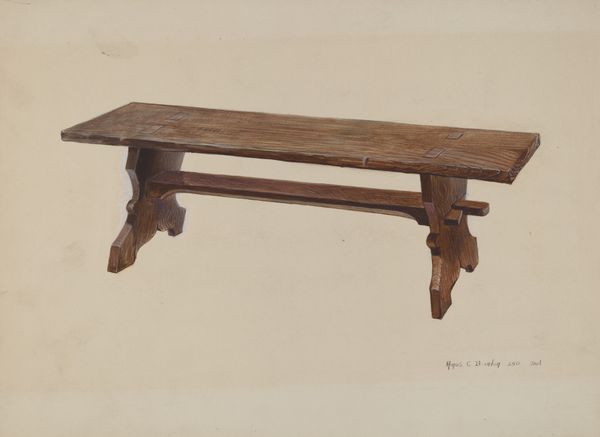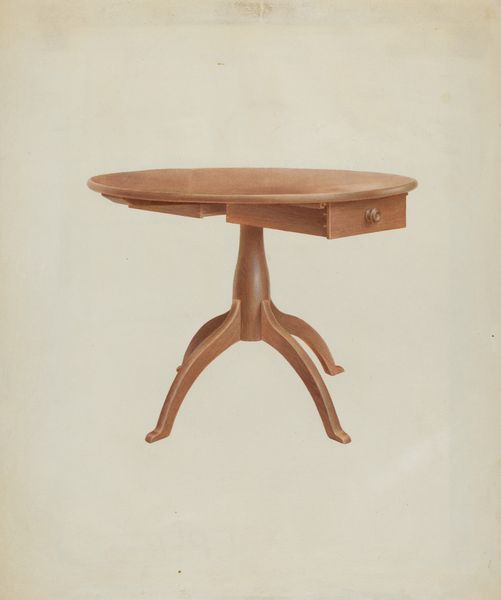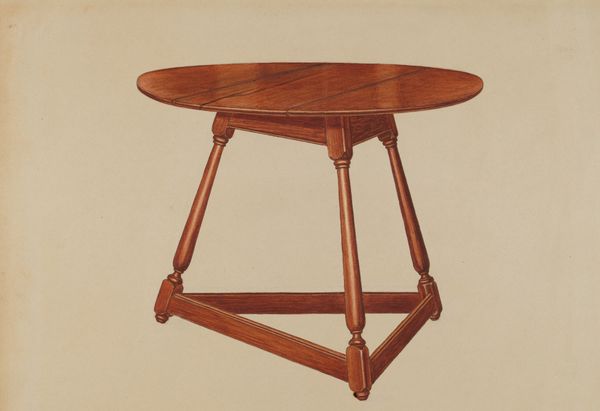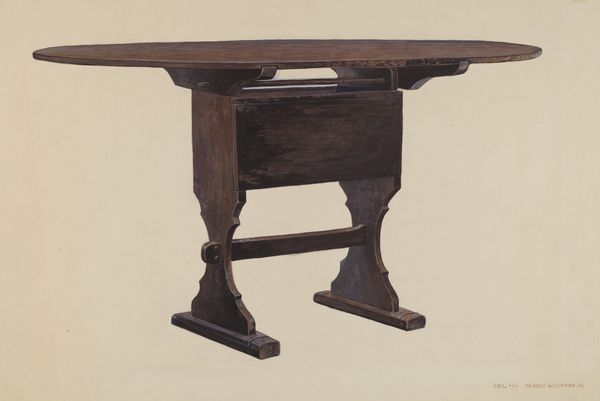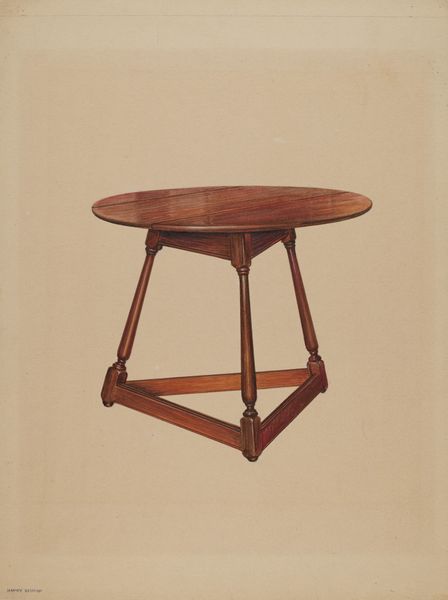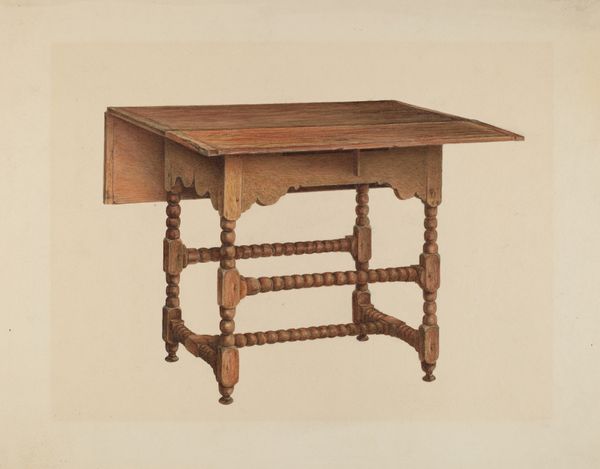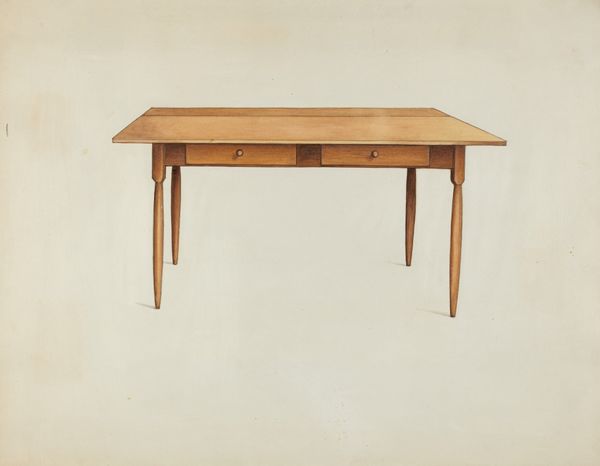
drawing, pencil, wood
drawing
charcoal drawing
oil painting
geometric
pencil
wood
academic-art
charcoal
watercolor
realism
Dimensions: overall: 31 x 40.7 cm (12 3/16 x 16 in.) Original IAD Object: 28 3/4" high; 41 1/4"wide
Copyright: National Gallery of Art: CC0 1.0
Editor: Here we have Charles Henning's "Trestle Table," circa 1939, created with pencil and watercolor. It's striking how a simple, everyday object is rendered with such precision and care. What do you see in this piece? Curator: Well, immediately I'm struck by its context. During the late 1930s, the US was still deeply entrenched in the Great Depression. Images of sturdy, functional objects like this table resonate with the values of self-reliance and practicality that were so important at the time. How does this image participate in those values and communicate about art's cultural role at the time? Editor: That’s a fascinating point! It wasn’t something I considered. I was initially drawn to the realistic depiction and the craftsmanship apparent in the drawing itself. How would this kind of work have been received by the public? Curator: Think about the broader social and political landscape. The government, through programs like the WPA, was actively supporting artists and promoting a vision of American life. Realism, particularly in depictions of everyday scenes and objects, was favored because it was accessible and could convey messages about American values. Could this work also serve to create social cohesion through this idealized portrayal of domestic life? Editor: So it’s not just about the table itself, but about the values and ideals that it represents within that specific historical moment. This puts the artist into a completely new space where his drawing carries significant power! Curator: Exactly! And thinking about the museum’s role in exhibiting works like this, it's about presenting not just art, but also constructing narratives about American identity and history. Do you find yourself seeing anything in the art beyond aesthetic enjoyment now? Editor: I definitely do! I am now also critically assessing and thinking of what the artist tries to communicate to society at the time! This table becomes less about being an artistic masterpiece, but something that serves cultural and political importance! Curator: Precisely. It’s a good reminder that art is rarely created or viewed in a vacuum.
Comments
No comments
Be the first to comment and join the conversation on the ultimate creative platform.
